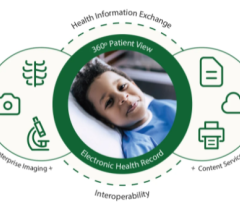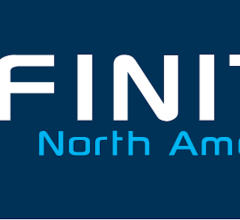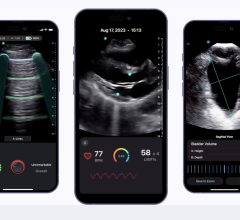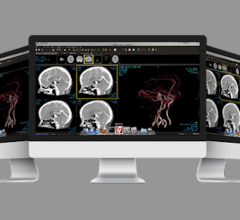
Panelists (L to R): C. Bolan, P. Bak, PhD, D. Holland, VP, Product Mgmt, Emageon, D. Weiss, M.D., P. Chang, M.D., G. Wendt, M.D.
More Photos
What is the value of a truly multimedia-enabled EHR? For some, it is worth millions, for others, it is the foundation for something of much greater value – decision support.
Radiologists and CIOs debated this topic at an EHR Panel titled “How EHR Will Increase Your Revenue in a PACS Environment” that was organized by Imaging Technology News (ITN) magazine and sponsored by Emageon, held Monday, March 19, 2007, in San Antonio, TX, on the eve of the PACS 2007 conference.
ITN set out to get the experts' views on what an image-enabled EHR will offer healthcare organizations and the patients they serve, and invited a group of visionaries in the medical field to discuss what is the real return on investment (ROI) in terms of financial and clinical benefits.
Several panelists quantified the value of implementing an EHR by comparing total capital investment to implement the system with efficiencies gained by their healthcare network and increased productivity. For Geisinger Medical Center, a Pennsylvania-based healthcare network with 43-clinic sites, the utility of its EHR system, which cost between $60 - $70 million, is justifiable. The system manages data for 5700 maximum concurrent users. The EMR holds patient records with contextual links to PACS and scanned documents and includes a patient portal, MyGeisinger.org. The system provides clinical decision support through automated health maintenance reminders prioritized by providers, performs drug-to-drug, drug-to-allergy checking, forwards results alerts and has templated notes that use SmartText and SmartSets built around guidelines.
But does it scale? “At our size, it is affordable,” indicated David L. Weiss, M.D., clinical section head, Imaging Informatics, Geisinger Medical Center. “We are allowing smaller hospitals to use our EMR, doing point-to-point image transfers.”
Improvement in treatment times and best practices that attract clients justify why the University of Wisconsin Hospital and Clinics considers its EHR system to have a high monetary value, according to Gary J. Wendt, MD, MBA, vice chair of Informatics, enterprise director of Medical Imaging, University of Wisconsin – Madison. Similarly, David Holland, VP of Product Management for Emageon, quantifies implementation of the EHR system at BJC Healthcare in St. Louis, MO, as a cost-saving mechanism because it enhances clinical consistency and quality, provides scalability, eliminates redundancy and simplifies management.
But does the EHR offer something of greater value?
The EHR as we understand it today does not yet have any significant value, say other experts, because the industry has “pitched too low” when it comes to true interoperability, according Panel Moderator Paul J. Chang, M.D., Professor and Vice-Chairman, Radiology Informatics, Medical Director, Pathology Informatics, at the University of Chicago Pritzker School of Medicine, and Medical Director, Enterprise Imaging, at University of Chicago Hospitals.
Dr. Chang contends that the current notion of an EHR is merely the foundation for a much more beneficial instrument. “The multimedia part is just the first step, but can’t justify [ROI],” said Dr. Chang. “To me the future of the EHR is to support virtual collaboration or what people call Web 2.0.” Dr. Chang believes that “what can improve patient outcomes is collaboration.” By leveraging the EHR, clinicians can collaborate virtually, delivering real-time decision support.
What Chang describes is the direction in which the Canada Health Infoway is headed. Canada’s national multimedia-EHR is already 53 percent implemented and due to be 95 percent complete by 2009. Canada’s $320 million investment from federal resources, in addition to contributions from its provinces, has laid the foundation for a larger vision.
“The next step is to put all decisions support across everything in the EHR,” said panelist Peter R.G. Bak, Ph.D., project director, Architecture, Diagnostic Imaging and Laboratory, Canada Health Infoway. “That means CAD applications, data mining tools and so on.” Bak noted that getting Canada’s EHR infrastructure in place is only the first step before applying the decision support tools, which will not happen for another 5 to 10 years.
“Today's EHR is a very modest view of true interoperability,” said Dr. Chang. “What is key is decision support.”







 June 28, 2024
June 28, 2024 








